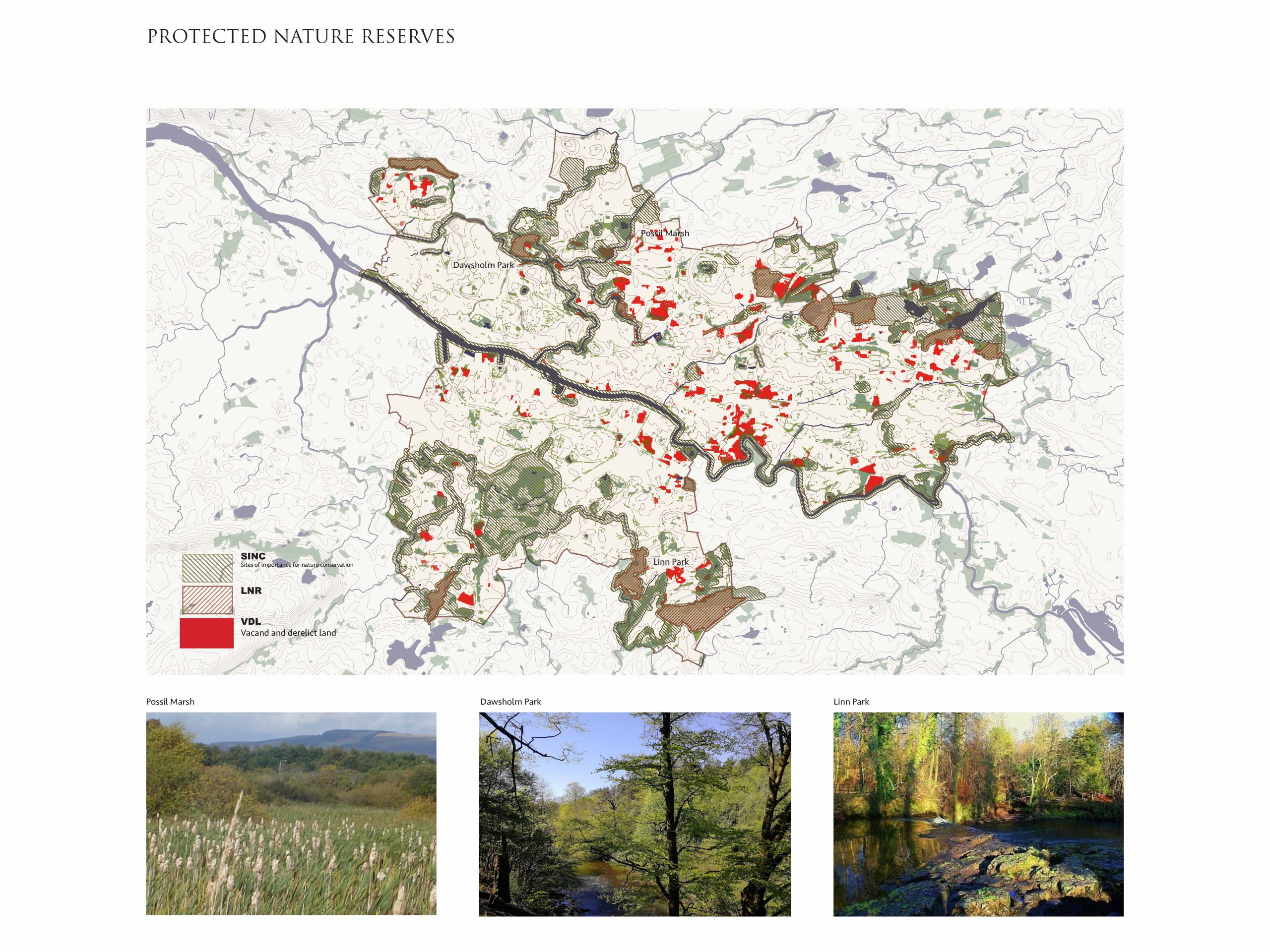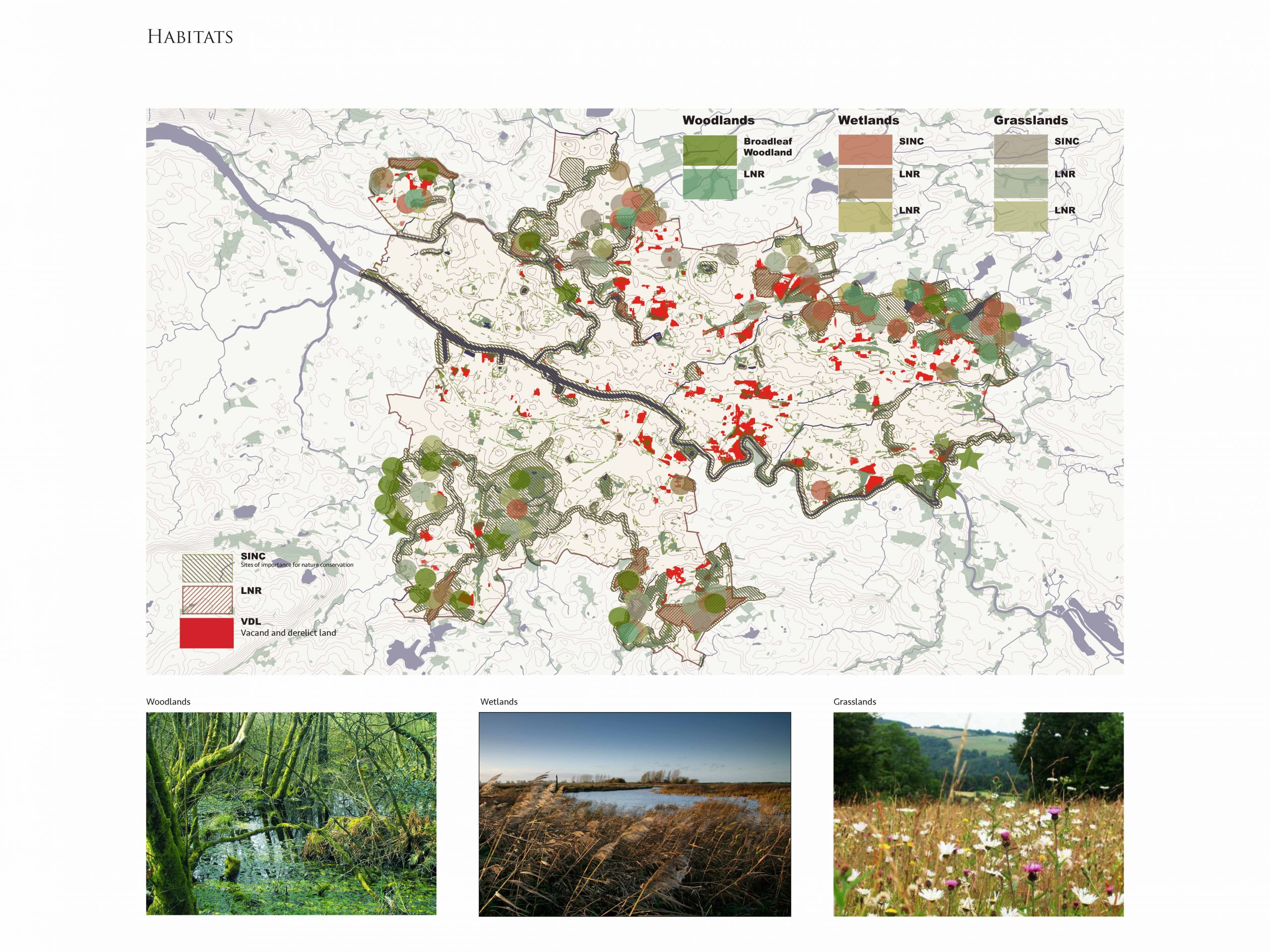Vacant & Derelict Land
One of the effects of the rapid de-industrialization that Glasgow was witness to are the post-industrial wastelands, which total around 1000 hectares, or 6% of Glasgow’s total area. To meet the plans of the Green Network Vision stretching from the Loch Lomond & Trossachs National Park to the upper Clyde valley woodlands, vacant and derelict land in Glasgow could be used to allow nature to regenerate and
stop to process of biodiversity and habitat loss.
Green Space
Even though Glasgow has 26% greenspace, the attrition of local habitats and the wider ecosystem continues due to increasing urbanisation which does not consider the needs of natural habitats. Generic greenspace and brownfield sites do not contribute to the overall health of the struggling natural ecosystem of Glasgow.
Local Nature Reserves & Sites of Importance for Nature Conservation
There are 12 Local Nature Reserves which make up just under 2% of the land coverage of Glasgow. But because of their fragmented nature, these reserves continue to struggle and loose biodiversity, meaning species are still prone to dying out within the city.
Habitats
To address diminishing nature in Glasgow due to urbanisation, a renewed focus needs to be applied on the interconnectivity and resilience of the different types of habitats that were naturally found in the once unspoiled landscape which the city now occupies. Those habitats which remain are on the periphery of the city, which shows they way in which human centered thinking has neglected the importance of integrating natural habitats within urban frameworks. Major issue with they current style of species and habitat conservation is the focus on preservation instead of regeneration. Regeneration would occur if habitats were properly integrated into continuous networks. Vacant and derelict land could provide a spatial provision for this interconnection.
Key Themes: Boundaries, Ecology



